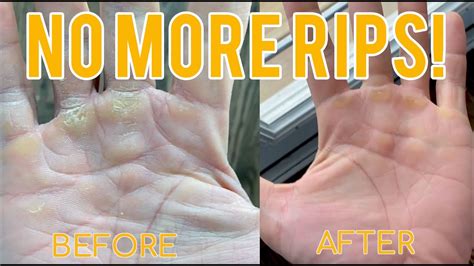How To Get Rid Of Calluses On Hands: A Comprehensive Guide
Calluses on your hands are a common problem, often resulting from repetitive actions like weightlifting, gardening, or playing certain instruments. While they're a natural protective mechanism, thick calluses can be uncomfortable and even painful. This guide provides effective methods to soften and remove hand calluses, restoring comfort and smoothness to your skin.
Understanding Calluses: Why They Form and What to Expect
Before diving into removal methods, understanding callus formation is crucial. Calluses develop as a protective response to repeated friction or pressure on the skin. The skin thickens to cushion the underlying tissue, creating a hard, leathery layer. This is a normal process, and attempting to completely eliminate calluses might hinder their protective function. The goal is to manage their size and alleviate discomfort, not to eradicate them entirely.
Effective Methods for Callus Removal
Several approaches can effectively soften and reduce the thickness of hand calluses. Remember to always start with the gentlest methods and progress to more aggressive ones only if necessary.
1. Exfoliation: The Gentle Approach
Regular exfoliation is a key component of callus management. This helps remove dead skin cells, preventing the build-up that contributes to callus thickening.
-
Methods: Use a pumice stone, a foot file (be gentle!), or a specialized callus remover tool after showering or bathing when skin is softened. Gently rub the callus in circular motions. Avoid harsh scrubbing, which can irritate the skin.
-
Frequency: Exfoliate 1-2 times per week.
2. Soaking: Softening the Callus
Soaking your hands softens the callus, making it easier to exfoliate and remove dead skin.
-
Method: Soak your hands in warm, soapy water for 10-15 minutes. You can add Epsom salts or baking soda to the water for extra softening power. After soaking, gently exfoliate.
-
Frequency: Soak your hands before each exfoliation session.
3. Moisturizing: Preventing Future Calluses
Keeping your hands moisturized is crucial for preventing future callus formation and maintaining soft skin.
-
Method: Apply a thick, moisturizing cream or lotion, particularly after showering or washing your hands. Look for creams containing ingredients like urea or lactic acid, known for their moisturizing and exfoliating properties.
-
Frequency: Moisturize your hands several times a day, especially after washing.
4. Chemical Exfoliants: For Stubborn Calluses
For persistent, thick calluses, chemical exfoliants can be more effective than physical methods.
-
Method: Look for products containing salicylic acid or lactic acid. These are available in creams, lotions, and pads. Follow the product instructions carefully.
-
Caution: Use these products sparingly and avoid applying them to broken or irritated skin.
5. Professional Help: When to See a Doctor or Podiatrist
While home remedies often suffice, some calluses require professional attention. Consult a doctor or podiatrist if:
- Your callus is excessively painful.
- You have an infection (signs include redness, swelling, pus, or increased pain).
- Your callus is accompanied by other skin conditions.
- Home treatments haven't been effective.
Preventing Calluses: Proactive Measures
Preventing callus formation is often easier than treating them. Here are some preventive measures:
- Wear gloves: Protect your hands when performing activities that cause friction or pressure, such as gardening or weightlifting.
- Use padding: Use protective padding, like callus pads or moleskin, on areas prone to callus development.
- Improve your grip: If you're playing an instrument, ensure you have a comfortable and proper grip technique.
- Maintain good hydration: Drinking plenty of water helps keep your skin hydrated and less prone to dryness and cracking, which can lead to callus formation.
By combining these methods and incorporating preventive measures, you can effectively manage hand calluses and keep your skin soft and healthy. Remember patience is key; consistent effort will yield the best results.
